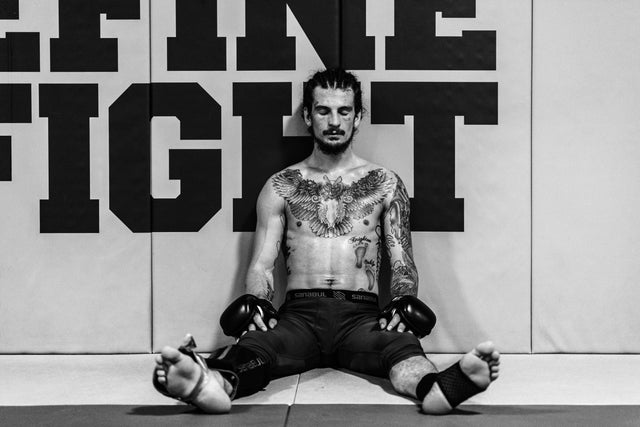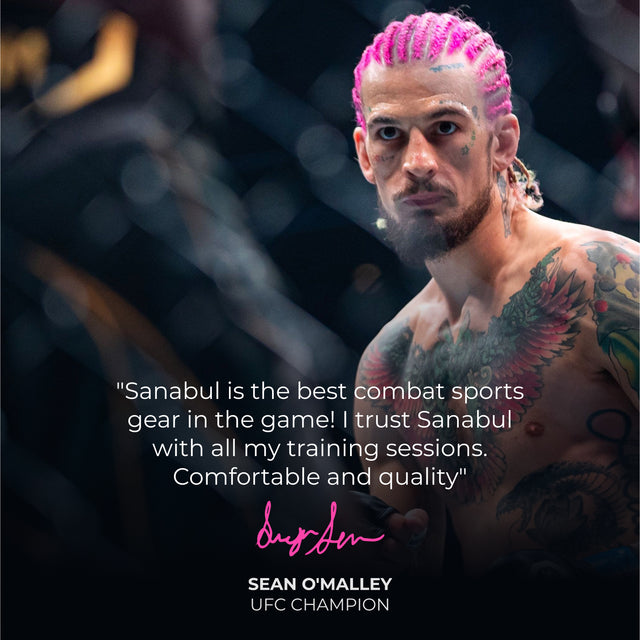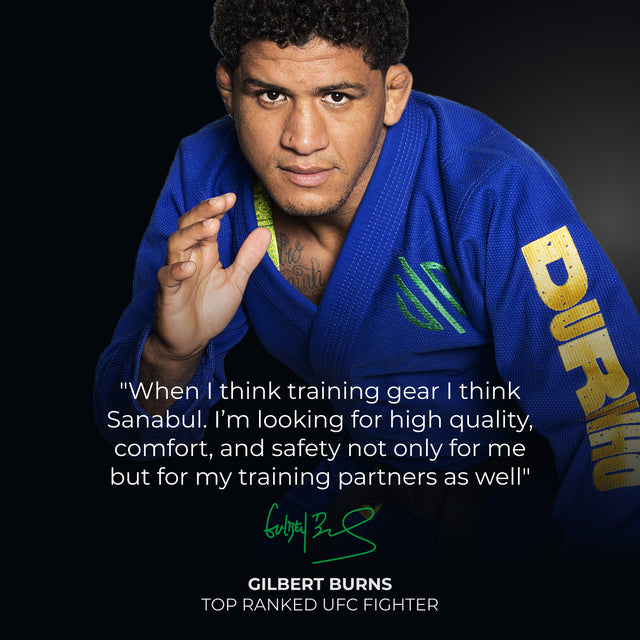Benefits of Lower-Intensity Training Sessions
Introduction
To see a higher quality and quantity of improvement/growth, you should consider adding in lower intensity training days.

Winning

Across all combat sports, athletes train for victory in competition. In Muay Thai, Wrestling, Jiu Jitsu / BJJ, and MMA, winning means so much. In everything fighters do, they have to win. In training, they feel they must win in everything. Nothing wrong with that, the best athletes have this type of mindset, but the difference is that they know when to have it.
When you’re training with other combat sports athletes also focused on winning, you’ll have to give everything you have to beat them, as they will be doing the same.
Constant competition pushes everyone in the gym to be better and constantly improve. However, when you’re training to win during practices all the time and are under the stress of constant competition, you will take a mental and physical beating along the way. Your mind may become numb when your only focus every day is to win in your preparation, leading up to the actual competition itself. Your body will experience wear, tear, and nagging injuries training like this.
With the constant stress and beating athletes go through training this way, it makes sense why many go into fights with injuries. They’re fighting immense pain just to make it to practice, that winning the fight becomes a secondary goal; making it to the fight in somewhat operable shape becomes the main focus.

Just to be clear…
This is NOT to say that you shouldn’t be training hard. You ABSOLUTELY need to train hard, especially if you’re training for competition. We’re just trying to say that there may be a way to make this way of training more sustainable.
We’ve also attached a very insightful video from the Joe Rogan Experience, where he had Firas Zahabi on the podcast to discuss how to train smarter. As GSP’s head mma coach at Tristar Gym, he has successfully trained many other numerous high level mma fighters so he may be on to something… We highly recommended that you watch it after this article and consider some of his ideas
Overtraining (compared to recovery)

If you’re red-lining a car when you drive it, you’re using the vehicle at a speed that it may not have been designed to operate at for extended periods of time, without causing serious damage to it. Apply this to training… if you’re red-lining your body everyday, aka overtraining (compared to the quality and quantity of recovery you get), eventually the damage will accumulate to the point where you cannot operate at a decently functional level.
Mentally, you’ll feel burnt out and training will become a chore you don’t feel like doing. Physically, you will be sidelined with injuries and be forced to rest and take some time off.
A way to continue your intense training… that takes longevity into account

So how can you still maintain a consistent, intense training schedule without experiencing mental burnout/numbness and physical breakdown of your body?
You’ll never completely eliminate either of them, they’ll always be there to some degree, but there is a way to help limit both: mix in lighter intensity sessions and focus heavily on technique.
Lower Intensity + More Focus on Specific Technique

If you have injuries… if training feels like a chore… ease up on the intensity. This will allow your body to recover, even if it’s only for a day or so, before your next high-intensity session. That may be all you need to feel refreshed and revitalized. A much needed reset before you return to the “full speed ahead” training style.
While you’re slowing down, this could be a good time to refocus on technique. When you’re going full speed and power all the time, you may be going so fast that you miss key details and develop bad habits. Speed and power often mask the mistakes made and the slipping of fundamentals.
Let’s look at a striking example. During sessions, you’re throwing punches full speed and power, 100%. You feel great after doing this. You want to take a “reset” training day. You lower the intensity and throw at 50% power, focusing on technique. At a lower speed and power output, you notice that when you throw your jab, your back hand drops to your chest. In other words, you have just realized a mistake you make, something that your opponents may pick up on: whenever you throw your jab, there is an opening for them to hit your head on the opposite side where your hand drops. Dropping the hand when jabbing lowers the only defense for your head on that side. Discovering this, you focus on keeping the rear hand up when you jab. The lower intensity allows you to develop muscle memory, so now that when you jab, the non-punching hand is protecting your head. Without the slower speed and lower power, you may not have discovered this weak area and may have been caught by a well-timed and accurately placed strike from an opponent.
Why You Should Consider Lower Intensity and Prioritize Technique

Choosing a few techniques to work on use will lead to improvements. By ONLY using certain techniques, you’re limiting your skillset. You’re not using all of your tools, but that’s okay. You may “lose” in training and live rounds, but remember: it’s alright. Lose the battle in training, but win the war in competition.
You’re holding back from using your full arsenal of tools, but you’re also fine-tuning the techniques you’ve chosen to make them even sharper. Imagine when you use everything, adding in the recently honed moves you’ve been solely focusing on?
Yes, your training partners may have landed more strikes on you (while you landed less) during striking rounds. Yes, they may have submitted/controlled/escaped from you more than you did to them during grappling rounds. Again, it’s okay to lose in training. You may not realize it at the time, but you’re getting better at the select moves you’re putting effort into.
You’re noting mistakes you make, then fixing them and ingraining the improved sequence as muscle memory. You’ll work on more ways to avoid making these same mistakes and discover new ones to avoid. You will figure out how to implement what you’re working on, with different setups and from different positions

By focusing on select movements and not trying to “win” in training, you’re putting your effort into improving select aspects of your game. You’re less focused on doing whatever you can to “win” in training (which is how mistakes and slipping of fundamentals go unnoticed). You’re more focused on learning and improving, as a martial artist.
“The man who loves walking will walk further than the man who loves the destination.” Amend this to: the man who loves training to improve, will improve more than the man who loves training to win.
Your goal is no longer JUST to beat your opponent, it is to be the best version of yourself that you could possibly be.
“Lose” in Training = Learning. Learning → Victory in Competition

When your only goal is to win, you’ll do anything to win, even if that means taking shortcuts. Short-term, they may allow you to “win” rounds in the gym. Long-term, they may cost you the victory in competition because the bad habits developed when trying to “win” in training became muscle memory.
When your goal is to improve your skills, you’re focusing more on improving as a martial artist. You’re not just thinking about the short-term, you’re taking into account the longer-term benefits. More concentration on the finer aspects of the game like small details of a technique (positioning etc) will help you to maintain continuous growth, rather get caught up and plateau when your only goal is to “win” in training, at any cost (shortcuts, technique slip-ups)

When you train and work on developing your abilities and skills, “winning” in training will come naturally. Training this way will allow your overall martial arts capabilities to improve much faster, so even if you do pay attention to “winning”, you’ll find that you will have success.
You’re working through the steps behind the process. This gives you a more in-depth understanding of certain concepts that can be better applied and implemented in your performances. When you return to higher intensity training and you start incorporating all aspects of your game (and not just the few techniques you’ve been prioritizing), you will see how effective this type of training can be. You’ll be sharper, more calculated, and much more efficient with your actions
Final Words

Mixing in a lower intensity training day can allow your body a quick break to recover and recharge for your return to the normal high intensity training schedule, while helping you improve as a fighter through sharper focus and improvement of technique. Definitely something to consider if you’re dealing with nagging or more serious injuries, if you feel like you’ve plateaued in growth, if you feel mentally numb training, if training has become a chore you don’t want to do, or if you need a change of pace and want to add more variety into your training.
Keep the bigger picture in mind (competition victory), while honing your focus in on the smaller picture during practice (sharpening a select few aspects of your game). Training PURELY to win is like launching a missile, but you have no target in mind. Training to improve is doing research on the target, then destroying it with precision. Plan, direct, then fire your efforts toward your goals and what you want to improve on!
Jocko Willink (Navy SEAL, BJJ Black Belt) on overtraining
Joe Rogan and Firas Zahabi - How GSP Prepares For A Fight
GSP talking about mighty mouse
The Advice GSP Gives to Young Fighters
Demetrious “Mighty Mouse” Johnson on his training (apply this to lower intensity sessions as you see fit):
“You never know whether it’s the right amount or not when it comes to training or fighting at the highest level, so I just try to do what I feel is good enough, and then my coach can decide if we need to make any changes,” he explains…
If I’ve trained hard and I don’t feel good the next day, we can change it and do something different.
For me, it’s about being consistent, day in and day out. Some athletes today are burning their bodies up, and that makes them unable to keep on going to have a long and successful career.”
Mikey Musumeci & Kennedy Maciel Talking About training
TJ Dillashaw talks about his training routine (JRE)
Reliable MMA Training with Cory Sandhagen & Joe Rogan | JRE MMA Show 138
Thank you for reading - we hope this article was helpful and gave you some insight on potential ways to recover and improve by mixing in lower-intensity training days!





0 Comments
There are no comments for this article. Be the first one to leave a message!